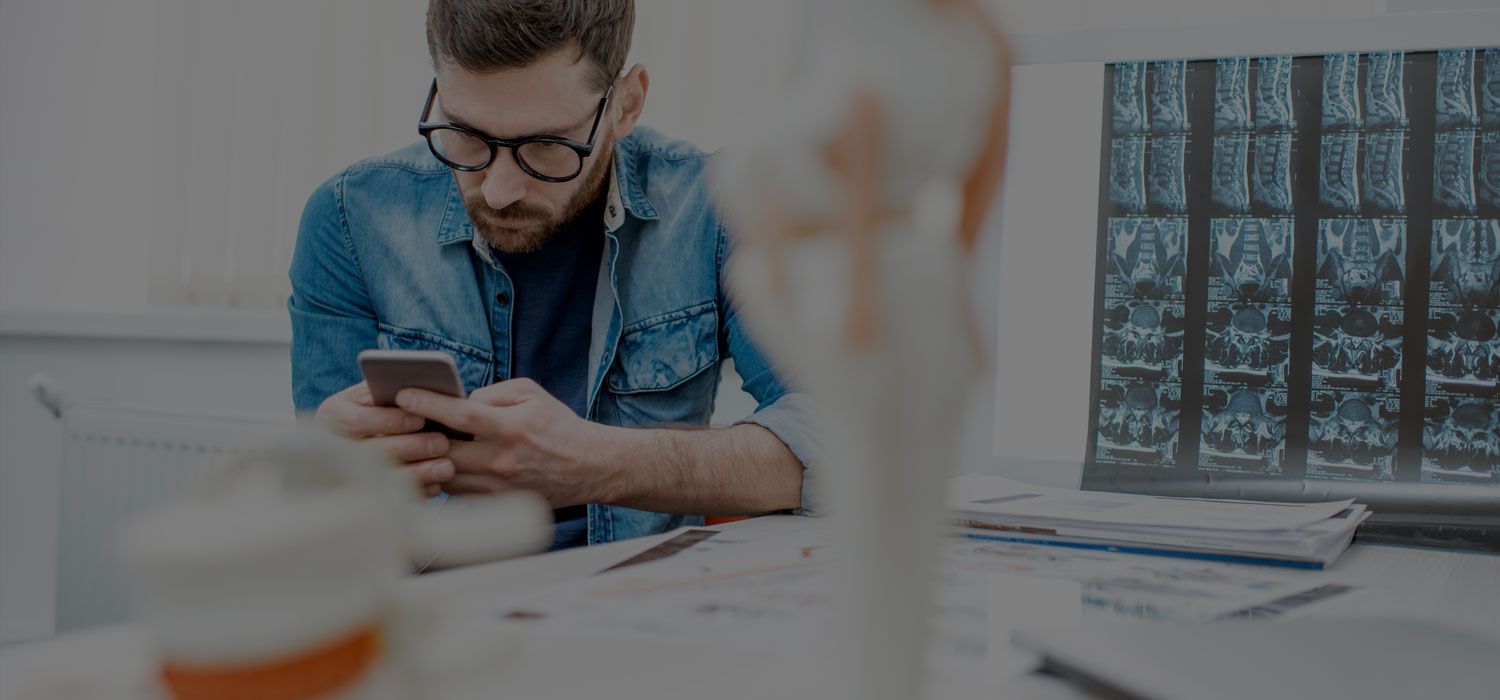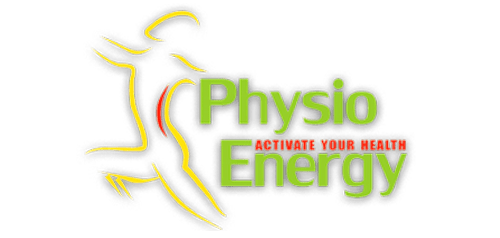Physiotherapy Centre
Physio Energy
Scientific Coordinator:
Moustogianni Athanasia PT
Scientific Associate:
Giannopoulos Ioannis PT.
MT IMTA, KCMT, Lic Ac,
Functional Neurologist
15351 Pallini
Phone:
+302106664111
Mobile:
+306974069152
+306936717084
physioenergypallini@gmail.com
Ergonomics

Adapting work to the person
ERGONOMICS: a way of planning and designing work in order to organize it to meet the abilities and needs of the people doing it.
-
Changing technology and humans
While human beings have not changed much over the centuries, however, machinery and working practices have changed considerably.
This means that developing technology is outstripping people's ability to adapt physically and mentally to change, which has several negative consequences.
Most of our common illnesses are the result of the disharmony of relationships between the individual and work. If the musculoskeletal system of the human body is overloaded, it can cause, for example, back injuries or joint and muscle disorders. Many diseases such as stomach ulcers, high blood pressure and heart disease are the result of stress at work.
People are of different heights or builds, e.g., some are stronger than others and their ability to withstand physical or mental stress varies. This should be taken as a basis for organizing work and determining working conditions.
-
The posture at work - Standing posture
- the items needed for the work are within reach of the worker
- the height of the workbench must be adjusted to the height of the worker so that the surface on which the work is carried out is at the same height as the elbows when the worker is standing with their back straight and shoulders relaxed
- the worker should stand upright and very close to the workbench, with the weight evenly distributed on both feet. There should be enough space for his feet
- the particular nature of the work may mean that the height of the position in which it is performed must be changed or that controls such as levers or switches must be positioned lower than shoulder height
- the surface on which the worker is standing is suitable for the working conditions
- using appropriate footwear reduces back and leg fatigue.
When the joints are stretched in an uncomfortable way the pressure creates significant fatigue. When the worker rests on one leg, the hip joint is subjected to a static load pressure equal to 2.5 times the body weight. A good example of how this can happen is in cases where a standing worker has to use a pedal that is not properly positioned.
Different types of work require different heights of the positions at which the work is performed. The working surface should be significantly higher for precision work than for heavy work. The working height can be varied according to personal requirements with the help of an adjustable workbench.
The posture at work - Sitting posture
The discomfort caused by sedentary tasks involving mechanical equipment and computers can be reduced in the following ways:
- careful adjustment of the screen or lens to suit the individual's vision
- the distance between the eye and the screen and the positions of the screen must be adjusted according to the worker
- adjusting the general lighting in the workplace according to the quality of lighting required, and providing special lighting in workplaces
- as much variation in work as possible, so that those performing work that is likely to lead to eye fatigue can rest for longer periods of time
- ensure that such persons have the right to take a break in a separate room to rest their eyes
- ensure that the working seat is adjusted to the appropriate height and that the body position is comfortable
-
Static loads
The most natural way of working is to work rhythmically. This "dynamic" loading helps the muscles to move from contraction to relaxation. If an object is elevated and remains in this position, it creates a constant "static" load on the muscles. Muscles that have a static load get tired because their contraction is continuous. After a short time, the muscles hurt. A static load on the muscles for a long time will also increase the pressure on the heart. The heart rate increases because the blood stays in the muscles.
Jobs where the worker is forced to work with hands raised or bent forward are the most common cases of "static" load generation.
Points to keep in mind!
Static loads, such as the position of raised arms or bending over, are common. They are often combined with visual strain from repetitive handling and work pressure. There is a need to review the ways in which this work is done.
The right way to lift
The legs and not the back should be used to lift the loads.
Drop your shoulders backwards, bend your back and bend your knees. Keep the load as close to your chest as possible and then straighten your legs to lift the weight while keeping your back straight:
- the load close to your body (starting position)
- the feet at a distance from each other and the body in correct balance
- bending of the knees
- the neck and back almost in a straight line
- straighten the legs while keeping the back straight
- where possible, the load should be held with both hands.
-
Standing posture
- work that involves arching the back (bending over) should be avoided as much as possible
- there must be an alternation between standing and sitting posture during the performance of the work
- the point at which the work is carried out must be at such a height that the back is straight and the shoulders relaxed
- the height of the point at which the work is carried out must be higher in the case of work requiring precision and lower in the case of heavy work
- when carrying out the work, the hands should be as close to the body as possible
- the tools needed to carry out the work must be close to the worker so that they can easily use them
- there must be enough space for the feet
- switches or other controls must be located below shoulder height
- terraces can help workers who are shorter.
-
Sitting posture
- there should be variety in work, to avoid sitting all the time
- the height of the position in which the table or the palm must be at the level of the elbows
- the seats shall be upholstered in soft material and their height shall be adjustable according to the person
- the height of the seat must not put too much pressure on the lower thigh and must allow the feet to rest firmly on the floor
- the seat back upholstered in soft material offers comfortable support for the back and lumbar spine.
- a leg support (footrest) must be used when the height of the seat is fixed
- sufficient space must be provided for the feet to enable them to change position easily
- the materials and tools are easily accessible
- constant repetitive movements of the fingers should be avoided.
Conditions related to vision
- one should be able to see objects clearly from the normal working position
- one should be able to see objects without having to bend one's head constantly
- changes in work involve avoiding excessive eye fatigue for long periods of time
- frequent breaks should be taken to avoid fatigue caused by strenuous monitoring
- lighting should be arranged so that conditions related to vision are the best, including local lighting.
-
Lifting
- lifting or transporting large loads should be done with the help of machinery as much as possible
- when moving heavy objects, the height difference must be kept to a minimum
- "static" gripping of materials or tools should be reduced to a minimum
- when lifting, the legs should be far apart and the knees bent
- the weight must be lifted by stretching the bent knees and without arching the back
- when lifting is combined with pushing, one foot must be positioned forward in the direction of movement
- when lifting, twisting of the body should be avoided as far as possible.
-
Control panels and systems
- the most important displays (signal indicators, etc.) shall be positioned so as to be easily visible
- the information provided by the screens must be simple and easy to read
- tables, controls, work tables, etc. must be large enough and all their parts must be easily visible from the normal working position
- instruments, displays and control systems must be clearly identified to show what purpose they serve
- differences in size, color, shape and position shall be present on instruments, displays and control systems to make them more easily distinguishable
- it must be possible to read all indicators easily regardless of whether they are in normal operation or not
- emergency controls for emergency situations must be easy to find and operate
- accidental activation of the controls is avoided by the correct observance of distances, the resistance they present during use, protective covers, etc.
- the operating instructions for the controls must be easily understood in accordance with the conditions prevailing in each country.
-
Ergonomics at home
- for housework, the same applies as above
- have an orthopedic mattress in bed for good support of your spine
- use orthopedic pillows for proper neck support
- do not sink into an armchair or a sofa, try to keep your back upright and well supported at the waist with an orthopedic cushion (roll) to maintain lumbar lordosis.
-
In the car
- Do not tilt the seat back too much
- correct adjustment of the mirrors to avoid having to make incorrect neck movements
- adjusting the height and depth of the steering wheel so that the shoulders are not stressed and the elbows are in partial flexion
- try to keep your back upright and your back well supported with an orthopedic pillow
- if you will be travelling for several hours, stop driving every hour for at least 5 minutes and do some walking
- use of a lever on the steering wheel in cases where it is considered necessary
- preference for an automatic gearbox in people with lower limb problems, especially knee problems
- use of a step on bulky and high jeep-type vehicles and on trucks, trucks, excavators, etc.
-
At school
- avoid excessive weight in the school bag
- distribute the weight of the bag on both shoulders
- at the desk, children should sit properly with their backs resting on the back of the seat
- in physical education, the sports teacher should be informed by the parents about any orthopedic problems of the child and follow an additional special program of exercises for prevention and further strengthening



